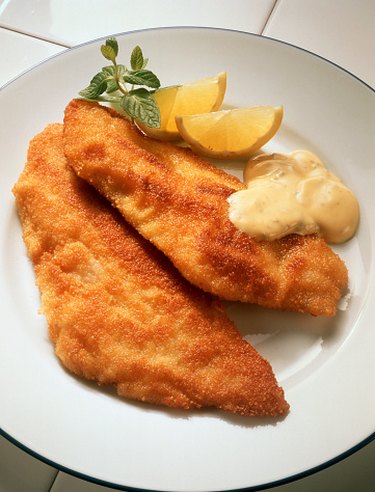
After going to a restaurant or ordering takeout to enjoy at home, you might find you suddenly have some leftover fried fish. You want to properly store the fish so that the meat does not spoil, while at the same time it does not loose its crunch texture that you enjoyed so much. If simply placed in the fridge with no sort of protective barrier, the cold air can dry out the fish making it flaky and unpleasant to eat the next day.
Step 1
Remove the fried fish from your the plate. Containers are often made of aluminum, paper or Styrofoam. Aluminum can leave a slight metallic taste, while paper can absorb the moisture in the fish. Styrofoam containers are not bad, however, they are also not air tight.
Video of the Day
Step 2
Scrape away any sauces that are on the fish. Sometimes tarter or cocktail sauce rest alongside the fish on your plate. If left on the fried fish they can make that part of the fish soggy. Scrape off any sauce to the best of your ability, while not scraping away the breading.
Step 3
Place the fish in an air-tight container. If the fish is still hot, then allow it to cool before sealing it. If it is still hot and you seal it, you can create steam that can dampen the fish. Once the fish has cooled, place the lid on the container and make sure that it is air tight.
Step 4
Place the fried fish in the fridge. If you have a meat drawer, you can place the fish there. However, in the air-tight container the fish won't pick up any other flavors from pungent foods if placed in other drawers or compartments.
Tip
Re-heat the fish in your oven or toaster oven at about 300 degrees F. This will crisp up the fried batter while also heating the fish.
Leftover food should be consumed within four days to avoid the risk of food poisoning. However, fish is probably best eaten by the next day for taste. If you don't get to eat it, place it in the freezer in the same air-tight container.
Video of the Day